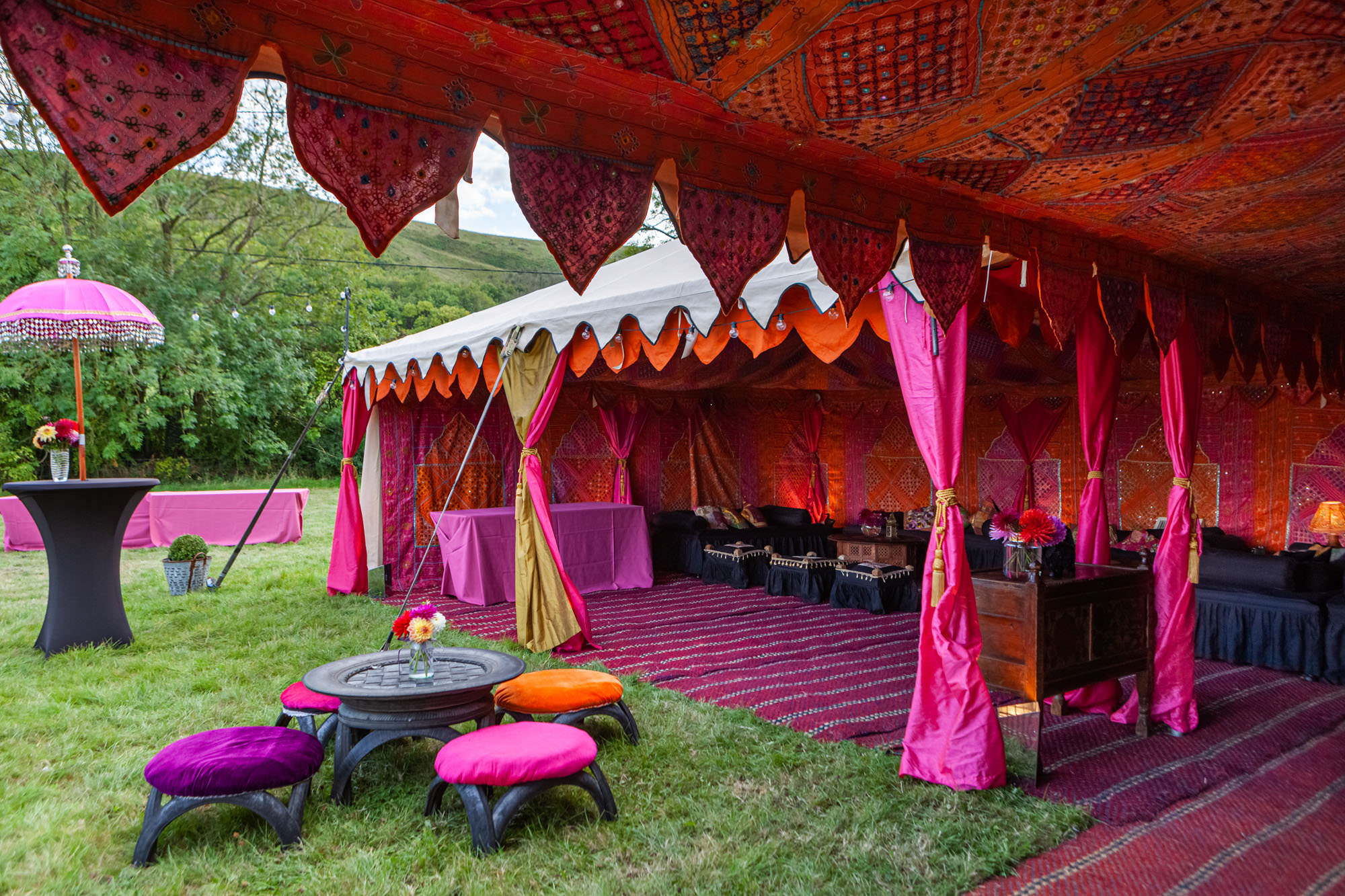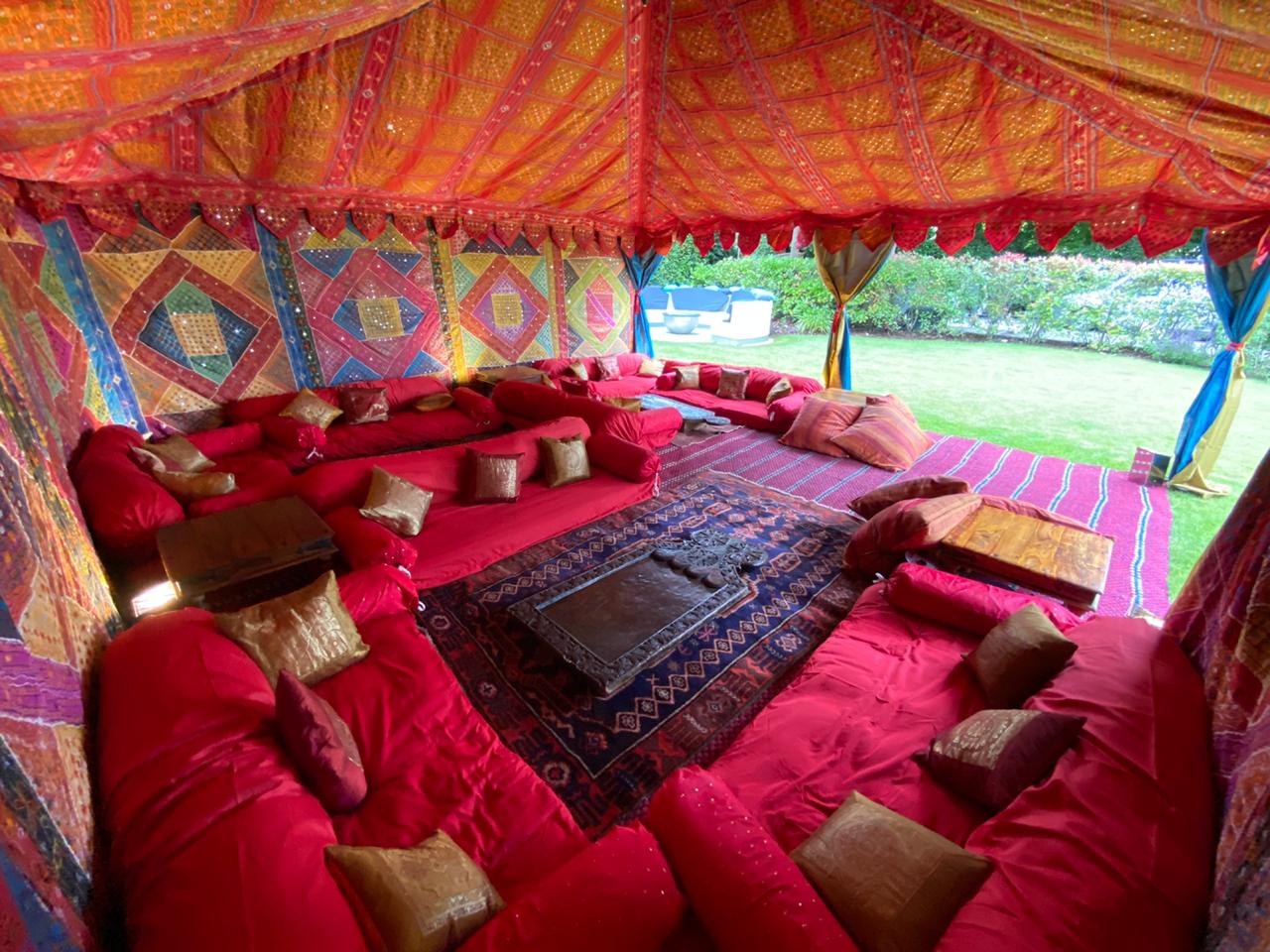Introduction:
Arabic tents are a captivating symbol of Middle Eastern culture, representing a rich history and a deep connection to the traditions and nomadic lifestyle of the region. These ornate and intricately designed structures have been an essential part of Arab culture for centuries. Serving as homes, gathering spaces, and symbols of hospitality. We will embark on a journey into the fascinating world of tents, exploring their history, cultural significance, and enduring legacy.
Part 1: History and Evolution of Arabic Tents
Level 1: Origins of Arabic Tents
- Nomadic Roots: Arabic tents trace their origins to the nomadic Bedouin tribes of the Arabian Peninsula. These tribes roamed the desert in search of grazing lands for their livestock and relied on portable tents as their primary form of shelter.
- Historical Significance: Tents played a vital role in providing shelter and protection against the harsh desert environment. They were easily constructed, dismantled, and transported, enabling the nomadic tribes to adapt to their surroundings and embrace a semi-nomadic lifestyle.
Level 2: Architectural Features and Design
- Unique Characteristics: Tents are known for their distinctive design elements, including their conical or rectangular shape, open sides, and intricately woven fabrics. The tents are often adorned with vibrant colors, geometric patterns, and traditional motifs that reflect the cultural heritage of the region.
- Craftsmanship and Construction: Tents are meticulously crafted, with skilled artisans using traditional techniques to create the intricate patterns and designs. The fabrics used, such as goat hair or camel hair, are chosen for their durability and ability to withstand the desert climate.
Part 2: Cultural Significance of Arabic Tents
Level 1: Hospitality and Social Gatherings
- Symbol of Hospitality: Tents have long been associated with the concept of hospitality in Arab culture. They serve as a welcoming space for guests, providing shelter, comfort, and a sense of warmth and inclusiveness.
- Social Gatherings and Celebrations: Tents are often erected during special occasions and celebrations, such as weddings, religious festivals, or community gatherings. They serve as a central gathering place where family, friends, and community members come together to celebrate, share meals, and engage in lively conversations.
Level 2: Connection to Nature and Cultural Identity
- Harmonious Coexistence with Nature: Tents symbolize the harmonious relationship between humans and the natural environment. The open sides of the tents allow for a seamless connection to the surrounding landscape, fostering a sense of unity and respect for the desert and its elements.
- Cultural Identity and Tradition: Tents hold deep cultural significance, representing the nomadic heritage, resilience, and resourcefulness of the Arab people. They are a visual manifestation of the values, traditions, and customs passed down through generations, serving as a reminder of the rich cultural tapestry and shared experiences of the Arab community.
Part 3: The Enduring Legacy of Arabic Tents
Level 1: Preservation of Tradition and Artistry
- Cultural Preservation: Despite advancements in modern architecture, Arabic tents continue to be valued and embraced as symbols of cultural identity and heritage. Efforts are made to preserve traditional construction techniques, craftsmanship, and design motifs associated with Arabic tents.
- Artistic Expression and Modern Adaptations: Arabic tents have also inspired contemporary designers and architects who seek to incorporate elements of their design into modern structures. This fusion of tradition and innovation ensures that the legacy of Arabic tents lives on in various forms and continues to captivate the imagination of people around the world.
Level 2: Tourism and Cultural Exchange
- Tourist Attractions: Arabic tents have become popular tourist attractions. Providing visitors with an opportunity to experience the cultural richness and traditions of the Arab world. At a time when visiting museums, cultural festivals and heritage sites, these tents help visitors gain insight into the nomadic lifestyle and the importance of the Arabian tent in Arab culture.
- Cultural Exchange: Arabian tents also promote cultural exchange and are often erected at international exhibitions, events and trade shows. This allows people from diverse backgrounds to learn about Arab culture, explore the craftsmanship of Arabic tents, and appreciate their aesthetic beauty.
Practical Benefits of Arabic Tents
In addition to their rich history and cultural significance, Arabic tents also offer practical benefits. And have found applications beyond their traditional use. Here are a few additional points to consider:
Modern Applications:
While Arabic tents have historical roots in the nomadic lifestyle, they have evolved to meet contemporary needs. Today, they can be found in various settings such as luxury resorts, eco-lodges, and outdoor event venues. Their unique design and cultural appeal make them a popular choice for creating a unique and immersive experience.
Versatility and Flexibility:
Arabian tents are very versatile in different environments. Tents is a temporary shelter during a camping trip or outdoor activity. Glamping, or a semi-permanent structure to create a comfortable outdoor lounge. Their portable nature allows for easy assembly and disassembly, making them a convenient option for mobile businesses or events.
Climate Control:
The design of Arabic tents takes into consideration the harsh desert climate. The open sides allow for natural ventilation, promoting airflow to keep the interior cool during hot summers. Additionally, the materials used, such as goat hair, provide insulation, keeping the interior warm during cooler months. These features make Arabic tents a practical choice for outdoor activities and events in various climates.
Sustainability:
Arabic tents align with sustainable living principles. Traditionally made from natural materials, such as animal fibers and wood, they have minimal environmental impact. In today’s eco-conscious world, Arabian tents are a sustainable alternative to traditional structures. Additionally, their portability allows for minimal disruption to natural surroundings. Making them an eco-friendly choice for temporary accommodations or events in environmentally sensitive areas.
Symbol of Cultural Heritage:
Arabic tents not only offer practical benefits but also serve as a symbol of cultural heritage and pride. Incorporating Arabic tent designs or motifs into contemporary architecture. And interior design can be a way to pay homage to the rich Arab culture and celebrate its influence on art, design, and craftsmanship.
Conclusion:
Arabic tents are not simply temporary structures. They represent a deep connection to the history, traditions, and cultural identity of the Arab world. Their unique architectural features, cultural significance, and enduring legacy. Arabic tents continue to captivate and inspire people worldwide. Through the preservation of craftsmanship, the celebration of cultural traditions. Promote cultural exchange so that future generations will cherish and appreciate the rich historical and cultural significance of the Arabian Tent.




